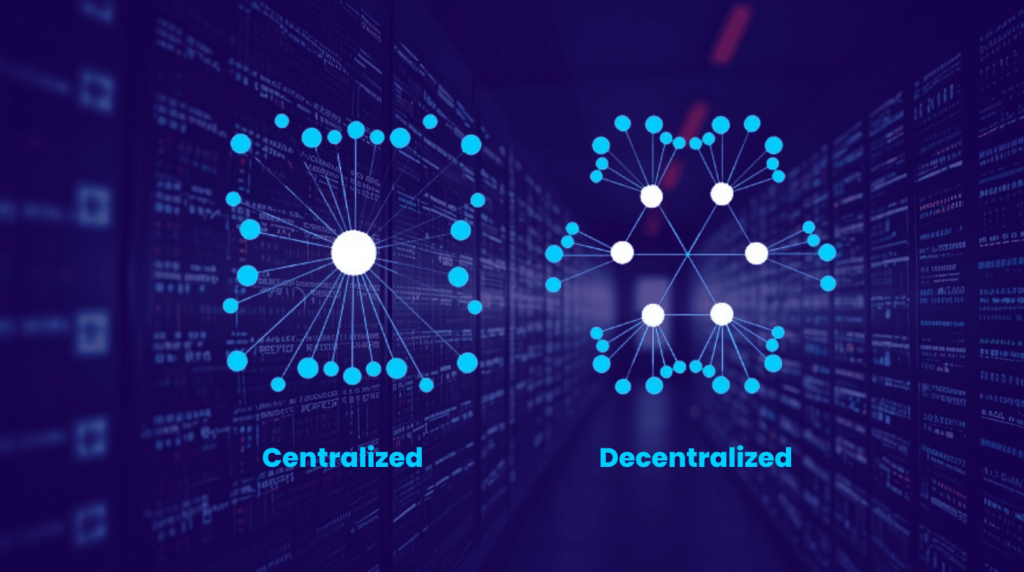In this era of digital transformation, how data is stored, processed and secured has changed a lot. Out of many storage solutions, blockchain and traditional databases are the two widely used data management systems. Though having a common ground in data storage, they differ greatly on architecture, security attributes and operational capabilities aimed at serving different use cases. Businesses and developers who are about to examine which kind of technology suits for them, this helps a lot. In this article we will explore the main differences between blockchain and a normal database.
Definition of Blockchain and Traditional Databases
Blockchain
Blockchain is a decentralized digital ledger technology that records transactions across multiple computers. It is designed to be secure, transparent, and immutable, ensuring that once data has been recorded, it cannot be altered retroactively. The data structure comprises blocks of information, each containing a cryptographic hash of the previous block, transaction data, and a timestamp, forming a chain. This structure allows participants on the network to verify the authenticity and integrity of the data without the need for a central authority.
Traditional Databases
Traditional databases, on the other hand, are centralized systems designed to store, manage, and retrieve data. They use structured query language (SQL) for relational databases or other query languages for non-relational databases to manipulate the data. Traditional databases can be organized as relational or non-relational databases, with data stored in tables, rows, and columns in the former and in various formats in the latter. These databases typically operate under the sovereignty of a single entity, which has ultimate control and ownership over the data.
Centralization vs. Decentralization
One of the most significant distinctions between blockchain and traditional databases is their architectural design regarding centralization.
Centralization in Traditional Databases
Traditional databases usually operate on a centralized model. This means that a single entity controls the database, managing permissions, data integrity, and security. The central control can have advantages, such as streamlined management and efficient processing of queries. However, it also poses risks: a central point of failure can lead to data breaches, loss of information, and lack of transparency in data manipulation. If a database becomes corrupt, compromised, or hacked, the integrity of that data is jeopardized.
Decentralization in Blockchain
Conversely, blockchain operates on a decentralized model, removing the need for a central authority. Every participant (node) on the network has access to the entire ledger, ensuring transparency and security in data handling. This model is particularly advantageous in environments where trust is a concern, as it allows for peer-to-peer transactions without intermediaries. Each transaction on a blockchain must be verified by the network, increasing trust among participants and reducing the risk of fraud.
Data Integrity and Security
Both blockchain and traditional databases prioritize data integrity and security, but they approach these objectives differently.
Data Integrity in Traditional Databases
In traditional databases, the integrity of data is enforced through constraints, rules, and access controls managed by an administrator. While techniques such as transaction logs can be used to track changes, the centralized nature of these databases presents risks. Administrators can inadvertently or maliciously alter data or grant unauthorized permissions, leading to potential data manipulation or fraud.
Data Integrity in Blockchain
Blockchain, in contrast, employs cryptographic techniques to ensure data integrity. Once a transaction is recorded on a blockchain, it is cryptographically linked to previous blocks, creating a tamper-evident chain of data. This means that altering one block would require altering all subsequent blocks, making it nearly impossible to change recorded data without detection. The transparency inherent in blockchain ensures that all participants can audit the data collectively, enhancing trust.
Immutability vs. Updatability
Another critical difference lies in how each system handles data updates.
Updatability in Traditional Databases
Traditional databases are designed for flexibility, allowing users to update, delete, or modify records as needed. This updatability is beneficial in many applications, enabling responsive changes and data management practices. However, it can also raise issues related to data history and accountability—once a record is changed or deleted, the previous data may be lost unless proper audit trails are maintained.
Immutability in Blockchain
Blockchain prioritizes immutability. Once a transaction is committed to the blockchain, it cannot be changed or deleted; it becomes a permanent part of the ledger. This characteristic is particularly valuable in industries where historical integrity is paramount, such as finance, supply chain, and healthcare. While immutability can complicate issues like correcting errors or updating records, it enhances accountability and trust in the data.
Performance and Scalability
Performance and scalability are crucial considerations when comparing blockchain and traditional databases, especially in volume-heavy applications.
Performance Capabilities of Traditional Databases
Traditional databases are optimized for high-volume transactions and can handle thousands of queries per second. They utilize indexing, caching, and optimization techniques to ensure quick retrieval and processing of data. This efficiency makes traditional databases suitable for applications that require fast data access and real-time processing, such as banking transactions and online retail.
Scalability of Blockchain
Blockchain technology has made strides in scalability, but it often faces limitations due to its consensus mechanisms. Each transaction must undergo verification by the network, which can slow down processing times as the number of transactions increases. For example, Bitcoin can handle about seven transactions per second, while blockchains like Ethereum are slightly faster but still lag behind traditional databases. This discrepancy makes blockchain less suitable for applications requiring rapid transaction processing. However, innovations like layer-2 solutions and modifications to consensus algorithms are continuously being developed to enhance blockchain scalability.
Use Cases and Applications
Given the inherent differences between blockchain and traditional databases, their applications in real-world scenarios vary considerably.

Applications of Traditional Databases
- Banking and Finance: Traditional databases are widely favored in banking systems for transaction processing and client records due to their speed and efficiency.
- E-commerce: Online stores utilize traditional databases to manage inventory, customer information, and transactional data.
- Healthcare: Patient records and administrative data are often maintained in traditional databases for ease of updates and speedy access.

Applications of Blockchain
- Cryptocurrency: The primary application of blockchain is in cryptocurrencies like Bitcoin and Ethereum, providing a secure and decentralized method for digital transactions.
- Supply Chain Management: Blockchain enhances transparency and traceability in supply chains, allowing stakeholders to verify the authenticity of products and manage logistics.
- Smart Contracts: These are self-executing contracts with the terms of the agreement directly written into code on the blockchain, automating and securing various transactions.
- Voting Systems: Blockchain can enhance electoral integrity by providing an immutable record of votes, improving voter trust and reducing the risk of fraud.

